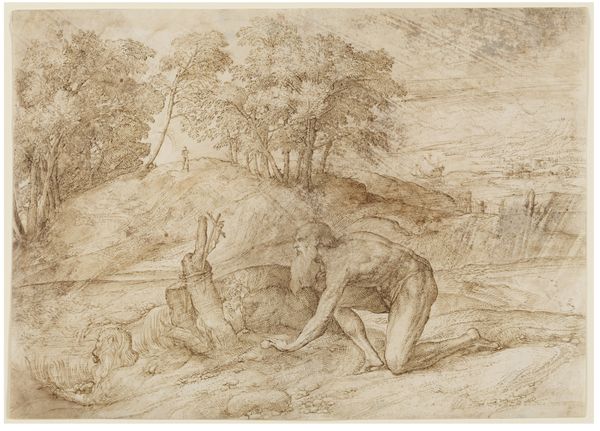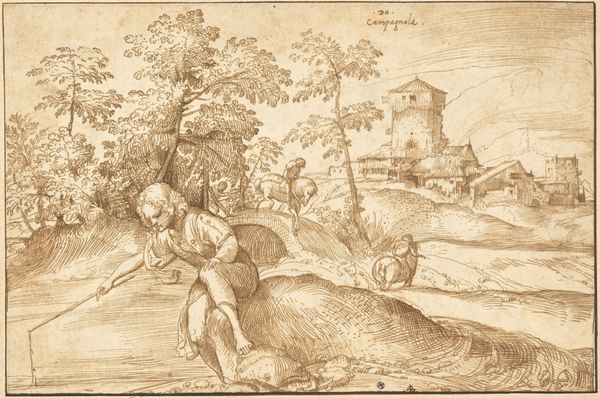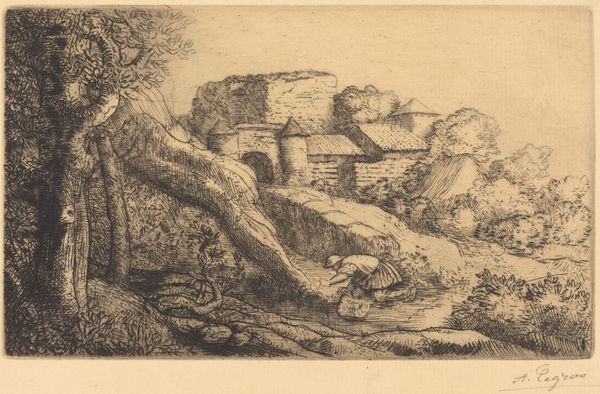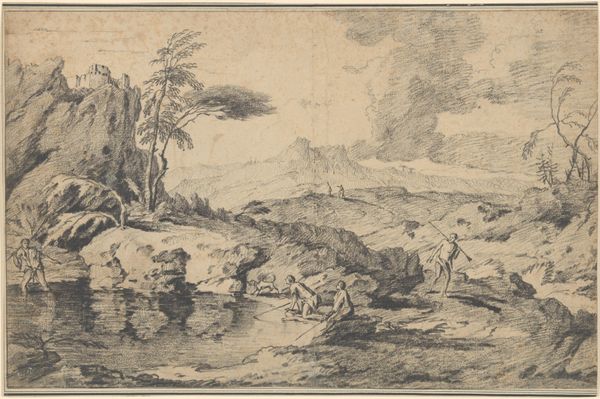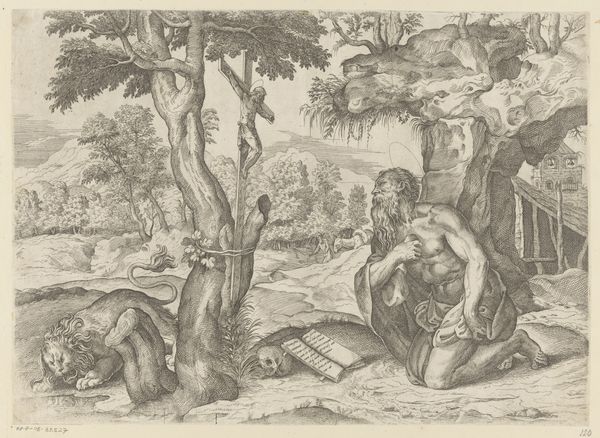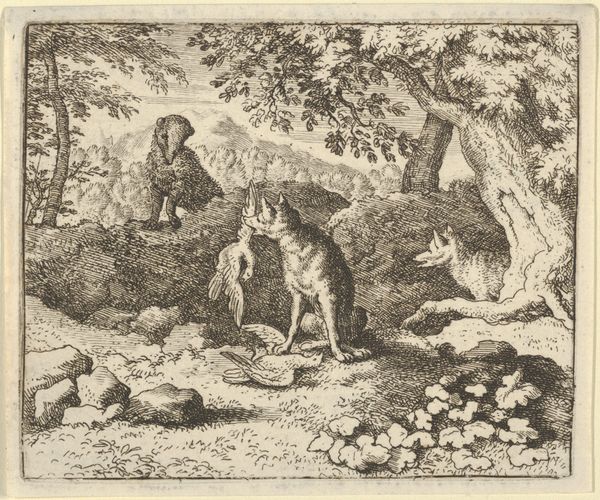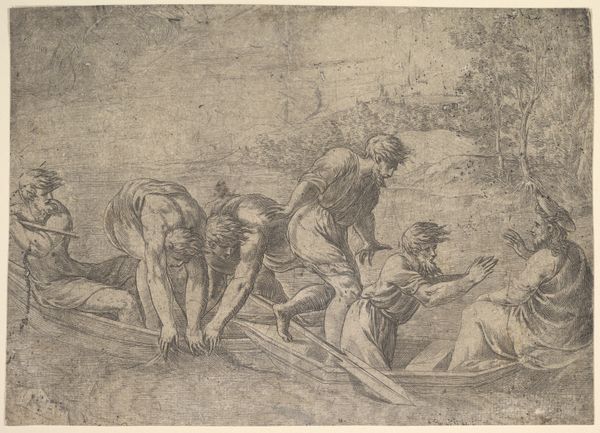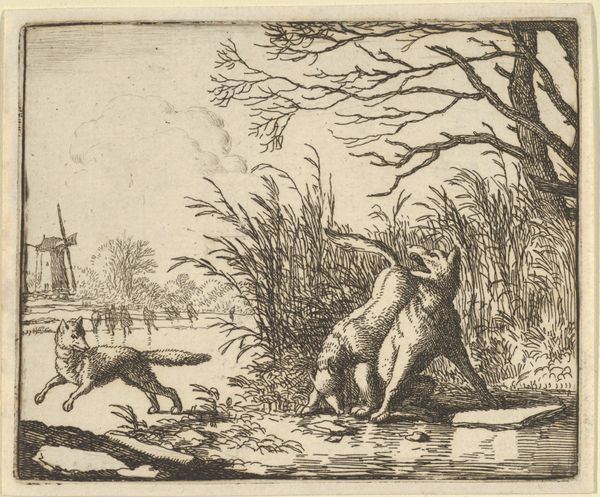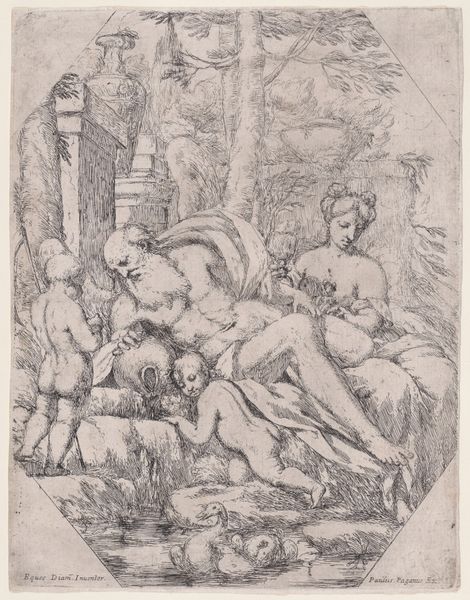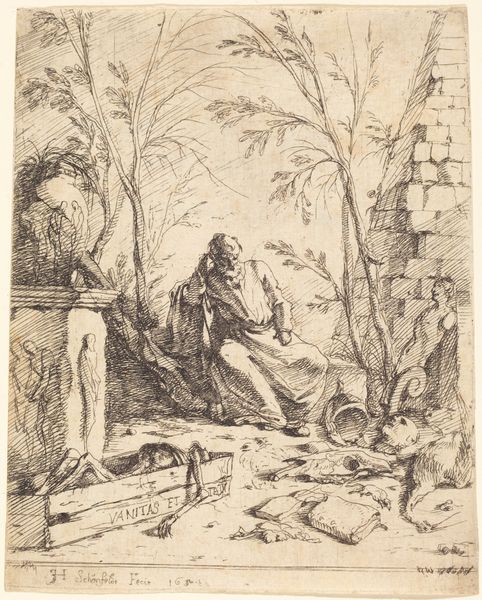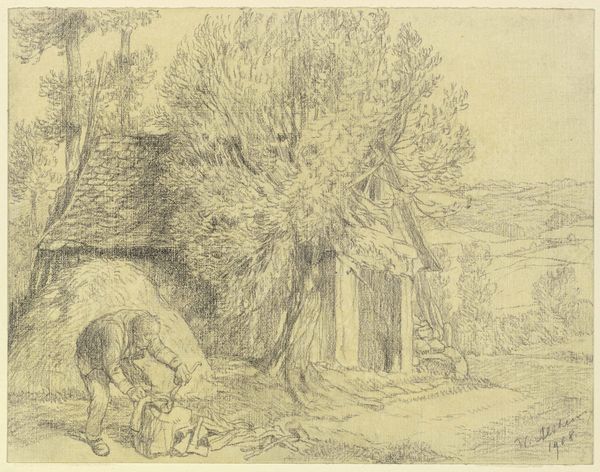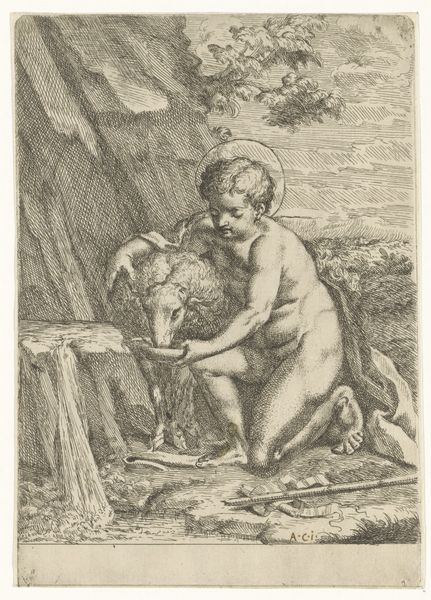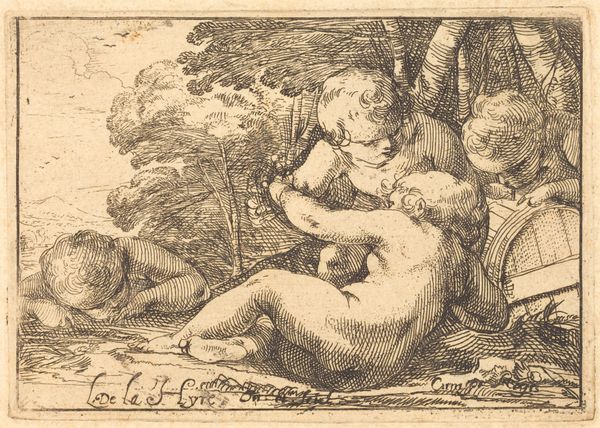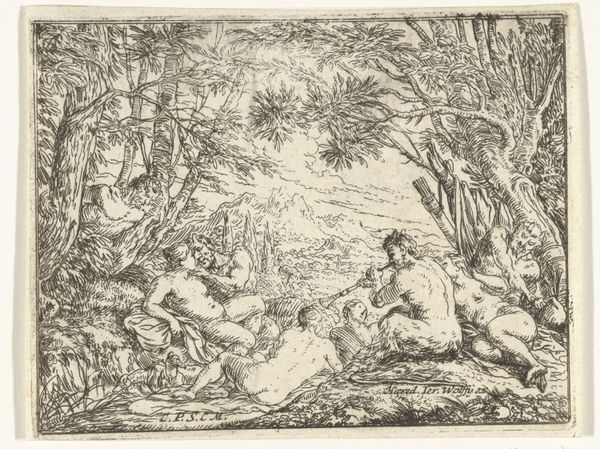
Moses and the burning bush 1539 - 1552
0:00
0:00
drawing, print, ink
#
drawing
#
ink drawing
# print
#
landscape
#
figuration
#
11_renaissance
#
ink
#
pencil drawing
#
history-painting
Dimensions: sheet: 4 15/16 x 8 1/2 in. (12.5 x 21.6 cm)
Copyright: Public Domain
Editor: This is Andrea Schiavone's "Moses and the Burning Bush," created sometime between 1539 and 1552. It’s an ink print, and I’m struck by how the artist uses line to create such a dynamic scene, full of texture. What do you see in this piece, particularly considering the materials used? Curator: What stands out to me is how Schiavone manipulates the printmaking process itself. The relatively accessible medium allowed for broader dissemination of imagery, influencing artistic and religious understandings. Think about the labor involved in creating a print versus a painting – it’s a process that enables reproduction, touching on early forms of mass production and consumption of images. How does that reproducibility affect its status as art, in your opinion? Editor: That's interesting. I hadn’t thought about it that way. It makes it feel less like a precious object, and more like a tool. The affordability, relatively speaking, probably meant this image and the story it tells could reach a much wider audience. But does that wider audience necessarily translate to influencing society and religious views? Curator: The materiality dictates a more egalitarian availability, challenging the traditional boundaries of art’s consumption. Schiavone's print circulated within a burgeoning market for prints, alongside other images of varying subject matter and quality. It would have entered a marketplace jostling for attention and offering new means of accessing information and shaping identities. It makes one consider whether Schiavone considered that in the print making process, its accessibility. What is your final opinion? Editor: That makes me rethink the social impact of art production. I've always focused on the artistic skill and composition, but understanding the role of materials and their distribution opens up a whole new way to analyze a piece. Thanks! Curator: Indeed. Materiality and production are powerful lenses through which to understand art’s engagement with the world.
Comments
No comments
Be the first to comment and join the conversation on the ultimate creative platform.
